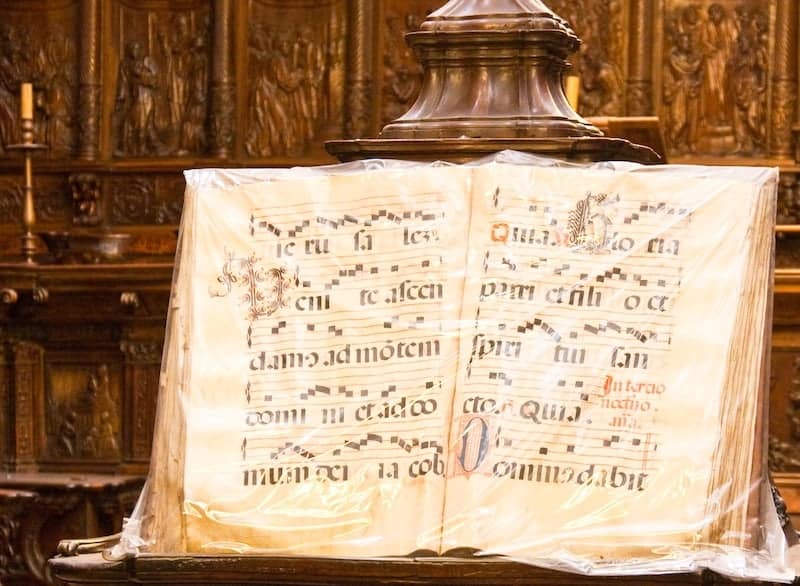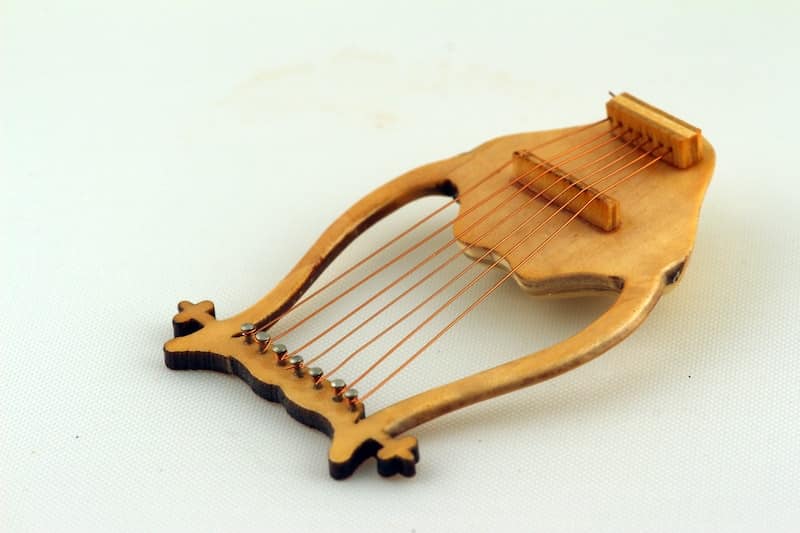Imagine a time when the air was filled with the haunting melodies of Gregorian chants, the rhythmic pulses of courtly dances, and the harmonies that echoed within the cold stone walls of ancient cathedrals. Welcome to the medieval music period—a captivating era of music that spanned almost a millennium, weaving together the threads of art, culture, and spirituality.
This guide will look at some of the history, key composers, and important musical features to help give you an understanding of what makes a piece from this time sound the way it does. Let’s get started.
When was the Medieval Period of Music?
Because it covers such a long time frame, stretching from 500-1400AD, historians like to split the Medieval era into three mini-periods, each of which saw various new musical developments.
They are:
- Early Medieval music (500-1150)
- High Medieval music (1150-1300)
- Late Medieval music (1300-1400)
These mini periods saw different styles of medieval music that we’ll cover in this article.
If you’d like a broader overview of the entire history of Western art music tradition, do take a look at our guide to classical music eras here.
Gregorian Chant

The dominant form of music in the Early Medieval period was Gregorian chant, which was named after Pope Gregory, who was credited with bringing it to the West.
Otherwise known as plainsong, it was liturgical, meaning that it was sung by monks as a ceremonial part of Mass in the Catholic Church.
This was monophonic music, meaning that it contained just a single melodic line, sung by the monks in unison, with no accompanying harmony parts or instrumental accompaniment.
Here is an example of a monophonic plainsong sung by the Gregorian Choir of Paris:
Organum
The 9th Century saw the development of organum.
This is where an extra voice is added above the main melody, usually at a fixed interval of a perfect fourth or fifth away.
This can be seen as an extremely primitive form of counterpoint (the relationship between simultaneous interdependent musical lines) and the beginning of harmony as we now know it.
Here’s a video of some early organum where you can hear the second voice singing the second line.
Liturgical Dramas
The first liturgical dramas were probably seen in the 10th Century.
A liturgical drama was a sort of religious musical play where monks, nuns, and priests sang and acted out biblical stories or scenes, including dramas that told the stories of Christmas or Easter.
Secular Music and Development of Polyphony
Although most music in the medieval period was religious, the High Medieval period saw the birth of the troubadour in France.
These wandering minstrels would make a living by traveling from town to town and were some of the earliest professional musicians.
They performed monophonic secular songs on topics including war, chivalry, and ‘courtly love’ – the love of an idealized woman from afar. The Minnesinger was the Germanic equivalent of this tradition.
Ars Nova was an artistic movement that gained traction in the Late Medieval period, at the beginning of the 14th Century.
Meaning “new art” in Latin, this was secular music that was increasingly expressive and varied.
Polyphonic writing (which has two or more simultaneous independent melodic parts) had begun to develop in the High Medieval period, and this now became the dominant style.
This shift led the way for the Renaissance era that was to follow, which would be characterized by a grander and more complex style.
Here is a piece of polyphonic music by Guillaume de Machaut, a major composer of the late Medieval era:
Music Notation in the Medieval Era
It was during the Medieval period that the foundations were laid for the way that we write down music today.
Until around the 9th Century, there was no written music, so pieces had to be taught “by ear” from person to person.
An early solution to this in the world of plainsong was the introduction of neumes, a series of symbols placed above the words, which indicated whether the pitch went up or down.
To begin with, the notation was not sophisticated enough to accurately record every aspect of a tune, so it was used as more of a memory aid, rather than as a comprehensive informative document.
As a result, interpretation of pieces would vary significantly from region to region.
Gradually, the notes began to be placed at different heights to give a rough indication of the size of the interval between each note then, gradually, horizontal lines were added for more accurate placement: this would ultimately lead to the five-line stave that we use for music notation today.
Now that pieces could be notated on parchment or paper, composers were able to share their music much more easily and widely, which allowed the Church to standardize the musical material for its religious ceremonies.
Rhythmic Notation
Incredibly, there was no way of notating rhythm until the 13th Century, when a system of rhythmic modes was developed.
These were set patterns of long and short note durations.
German theorist Franco of Cologne then came up with a system that laid the foundations for the way we write rhythms today, whereby differently shaped notes signified different note lengths.
This approach was popularised by Phillipe de Vitry, one of the most important composers of the Ars Nova period.
Modes
The functional tonal harmony and cadences that would dominate the Baroque, Classical, and Romantic periods had not yet been developed.
Medieval music was based upon a series of scales called modes whereby a melody would be built upon a particular scale.
There were eight ‘church modes’, which were all considered to have different effects upon the listener:
- Dorian
- Hypodorian (which we would now call Aeolian)
- Phrygian
- Hypophrygian (which we now call Locrian)
- Lydian
- Hypolydian (which we would call Ionian)
- Mixolydian
- Hypomixolydian (which is like a Dorian scale, but with the fourth degree as its ‘Finalis’, or ending note)
These modes can be accessed by playing a scale starting on various degrees of the major scale.
For example, a D Dorian scale contains the same notes as a C major scale but has quite a different character.
The modal approach would return centuries later in some 20th Century classical music and jazz.
Medieval Instruments
As we’ve discovered, the Early Medieval period was dominated by vocal music but there were still a number of instruments used in the medieval era.
Instrumental music began to develop alongside the vocal music, and many of the instruments used then are ancestors of instruments used by musicians today.
For example, flutes were made of wood rather than metal, and had holes instead of the complex system of keys we see now.
The lute, a fretted instrument with a hollow body, is a predecessor of the guitar, while the gemshorn, made from the horn of a goat, is a member of the ocarina family.
Meanwhile, the wooden recorder is a rare example of an instrument that has essentially retained its form since the Medieval period.
Other instruments included an early bowed string instrument called the lyre, and the hurdy-gurdy, a kind of mechanical violin.

Key Medieval Composers
Here are some of the key composers from the Medieval period:
- Stephen of Liège (850 – 920) – Belgian bishop, hagiographer, and composer of church music who was active towards the end of the Early Medieval period
- Hildegard of Bingen (1098-1179) – one of the best-known composers of sacred monophony. Also a writer, abbess, philosopher, and polymath
- Franco of Cologne (dates unknown) – German theorist and composer of the Late Medieval period who was instrumental in developing the notation of rhythm
- Guillaume de Machaut (1300-1377) – French poet and composer. A central figure of the Ars Nova style
Summary
So, that concludes our guide to the Medieval period of music.
We’ve learned about early developments in music theory, notation, and harmony that would go on to help shape Western art music as we know it today and about early changes in religious and secular music.
We hope you’ve enjoyed learning about this vast, mysterious, and fascinating era and that you’ve loved some of the pieces of music that we’ve shared.
